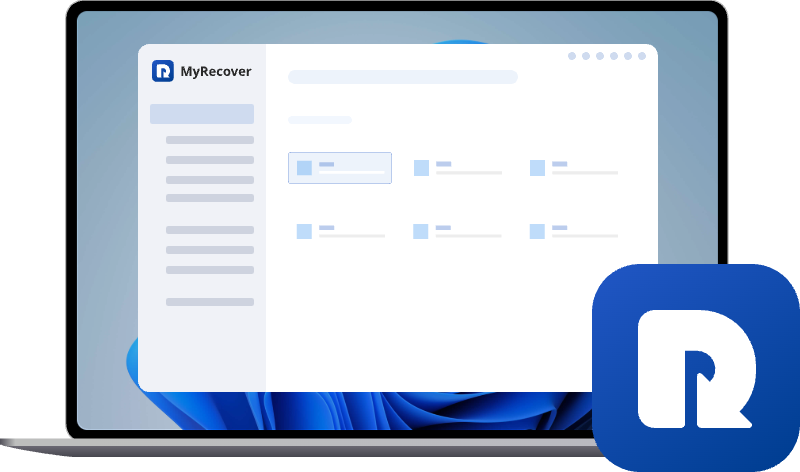Windows 11 Backup Using File History Missing ? (Solved)
File History backup missing in Windows 11? Learn how to re-enable it, check backup drive status, and troubleshoot common errors. If the issue persists, explore other effective backup or recovery methods to protect your important data effortlessly.
About File History Backup Feature in Windows
Windows File History acts like a time machine for your files. It continuously backs up your documents, photos, and other important data to an external drive or network folder. If you ever lose a file or need an older version, File History lets you go back in time and recover it. Key features of File Historyinclude:
- Automatic Backups: Regularly backs up files in libraries (Documents, Pictures, Videos, etc.), desktop, contacts, and favorites.You can add specific folder into the File History backup or exclude them as well.
- Version History: Keeps multiple versions of files, allowing you to restore an older version if needed.
- External Drive or Network Backup: Requires an external USB drive, secondary internal drive, or a network location (NAS or shared folder).
- Customize Backup Frequency: Set how often backups occur (every 10 minutes to daily).
- Backup Retention Period: Choose how long to keep saved versions (forever, until space is needed, or for a set duration).
Windows 11 Backup Using File History Missing? Possible Reasons
If you've discovered that File History is missing from your Windows 11 backup options, you're not alone. Many users report this issue after upgrading to Windows 11 or installing system updates. Let's examine the most common reasons why File History might be missing and how to resolve each one.
1. Windows 11 Feature Deprecation
Microsoft has been gradually moving away from File History in favor of newer backup solutions. While the feature still exists, it's no longer prominently displayed in Settings, sometimes hidden in advanced options.
2. Corrupted System Files
System file corruption can cause File History to disappear. This often happens after failed Windows updates, improper system shutdowns, disk error or malware infections.
3. Disabled by Group Policy
For business or school computers, IT administrators may disable File History, Group Policy settings can hide the featureor enterprise security policies might restrict it.
4. Missing or Disconnected Backup Drive
File History requires a properly configured backup drive, either external drive to network drive.
How to Solve "Windows 11 File History Missing" Issue?
If you're struggling with a missing File History feature in Windows 11, follow these comprehensive solutions to restore this valuable backup functionality.
- Before Proceeding:✎...
- Ensure you have connected a recognized hard drive to your computer, or configured a proper network drive for File History to make backup.
Solution 1. Access File History Through Alternate Methods
If you cannot see the File History backup option in Windows Backup settings (Pressing Win + I to open Setting, Navigate to "Accounts" -> "Windows Backup"), you can access it through Control Panel or Command shortcut.
Press Win+R, type "control" and hit Enter. Navigate to "System and Security" ->"File History". If visible here, configure your backup drive.
Press Win+R, Type "filehistory" and press Enter. This should directly open the File History backup window.
Solution 2. Re-enable File History Through Windows Features
If File History has disappeared in Windows 11, it may be because related components have been disabled. Make a quick check and enable them when necessary.
1. Press Win + S key together, type "Turn Windows features on or off". Click "open" under the matching result.
2. In the pop-up "Windows Features" window, scroll through the list. Pay special attention to these entries: Windows Backup, File Historyor other related options under "Windows Tools".
In newer Windows 11 versions, these may be categorized under "Legacy Components" or "Optional Features"
3. When you find relevant features, check the box for each File History-related option. If you see a "+" icon, click to expand sub-optionsand ensure all sub-options are also checked.
4. Click "OK" button to apply the changes.
5. System will show "Searching for required files..." progress window. May need to wait a few minutes while system downloads/installs components
6. When "Windows completed the requested changes" prompt appears. Recommend restarting your computerto ensure changes take full effect.
After completing these steps, File History should reappear. If issues persist, scroll down to other methods.
Solution 3. Run System File Check and Repair
When File History goes missing in Windows 11, corrupted system files are often the culprit. This detailed solution walks you through using Windows' built-in repair tools to restore missing components.
1. Press Windows+X, select "Terminal (Admin)" or "Command Prompt (Admin)". Click "Yes" when User Account Control prompt appears.
2. Type exactly "sfc /scannow"in the window and press "Enter" to initiate scan.
Observe progress percentage in command window. It will first verifyintegrity of all protected system files, then replaces corrupted files with cached copiesif corrupted files are found.
If you receive the message: "Windows Resource Protection found corrupt files but was unable to fix some of them", proceed to DISM repair by executing the following command:
DISM /Online /Cleanup-Image /CheckHealth
It will take 2-3 minute to check for component store corruption, and identifyproblems without attempting repairs. To perform "Full Repair", run the command below:
DISM /Online /Cleanup-Image /RestoreHealth
After completion, re-run "sfc /scannow"command to confirm all corrupt files were replaced.
Solution 4. Check Group Policy Configuration for File History
For Windows 11 Pro, Education, and Enterprise editions, Group Policy settings can override File History availabilityand then cause "Windows 11 backup using File History missing"problem. In such cases, you can adjust the Group Policy:
1. Press "Win + R" to open Run dialog. Type exactly: "gpedit.msc" and press Enter or click "OK". Provide administrator credentials if prompted.
2. In the left pane, expand folders in this exact orderand navigate to: Computer Configuration/Administrative Templates/Windows Components/File History. This path contains all File History-related policies.
3. Double-click to openand check the policy setting.
- "Enabled" - File History is forcibly disabled
- "Disabled" - File History is forcibly enabled. Ensure it is checked.
Alternative Backup Option When File History Not Showing Up Windows 11
If File History is not working or missing in Windows 11, another built-in backup option called "Backup and Restore (Windows 7)" is a nice alternative to performfull system backups, file backups, and even createa system image for disaster recovery.It is a legacy tool still available in Windows 10/11. The following shows how to set a backup via Backup and Restore (Windows 7).
1. Press "Win + R", type "control" and hit "Enter".
2. Go to "System and Security" → "Backup and Restore (Windows 7)".
3. Click "Set up backup" and select your backup destination.
4. Select what to back up. You have two options:
- Let Windows choose (default, backs up libraries, desktop, and system files).
- Let me choose(manually pick folders, including non-system files).
5. Schedule automatic backups in daily/weekly/monthly.
6. Finally, click on "Save settings and run backup".
Here’s a detailed comparison table between Backup and Restore (Windows 7) and in Windows 11:
| Feature | Backup and Restore (Windows 7) | File History |
| Backup Type | Full system backup + file backup | File-level backup (version history) |
| What It Backs Up | System image, programs, user files | Libraries, Desktop, Contacts, Favorites (custom folders) |
| Version Control | ❌ No (only latest backup) | ✅ Yes (multiple versions of files) |
| Backup Location | External HDD, network drive, DVDs | External HDD, NAS, network folder |
| Scheduling | Manual or scheduled (daily/weekly/monthly) | Automatic (every 10 min to daily) |
| Restore Options | Full system restore, individual files | Individual files/folders, older versions |
| System Image | ✅ Yes (for disaster recovery) | ❌ No |
| Best For | Full PC backups, disaster recovery | Document versioning, frequent file changes |
Final Thoughts
If File History is missing in Windows 11, try restoring it through Control Panel, Windows Features or other methods listed in the above section. For full system backups, use "Backup and Restore (Windows 7)" instead.
For users who need professional data recovery solutionswithout requiring prior backup, free MyRecover offers comprehensive file recovery capabilities. This specialized tool can help retrieve lost or deleted files even when Windows backup features fail. With advanced scanning algorithms, MyRecover can restore video, documents, photos, audios, archives and other file types from various storage devices.

- Comprehensive Recovery- Recovers 1000+ file types (documents, photos, videos, emails) from HDDs, SSDs, USB drives, and memory cards.
- Advanced Scanning Tech- Deep scan algorithm locates files even from formatted, corrupted, or RAW partitions.
- Crash Protection- Creates bootable media for system recovery when Windows won't start.
- Precision Recovery- Preview function lets you selectively restore files with original quality/folder structure.
- High Success Rate- Specialized recovery for challenging cases like partition loss or virus attacks.
- User-Friendly- Intuitive 3-step process (Scan > Preview > Recover) suitable for all skill levels


